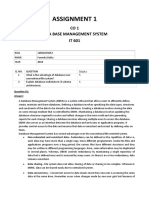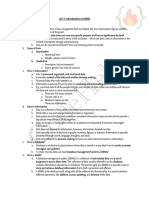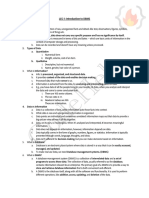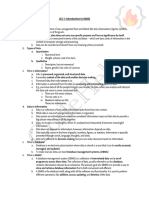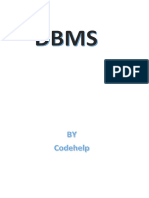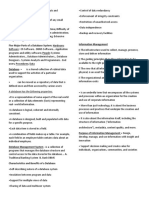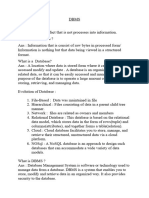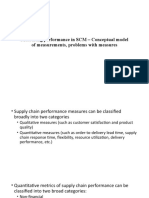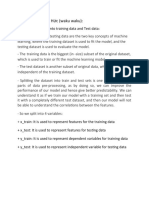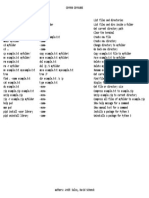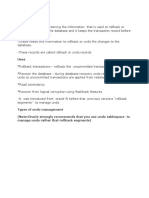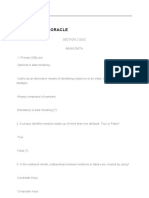0% found this document useful (0 votes)
104 views5 pagesIT for Agribusiness Students
This document contains questions about database management systems (DBMS). It begins with one-mark multiple choice questions that define key DBMS terms like database, data redundancy, and atomicity. Advantages of DBMS include data consistency and easy data access while disadvantages include high implementation costs and complexity. DBMS are applied in sectors like banking, education, and telecom. The document then covers DBMS architectures like single, two, and three-tier with descriptions and diagrams. It concludes with explanations of data abstraction levels and 10-mark extended response questions on DBMS topics.
Uploaded by
bhagyashree devadasCopyright
© © All Rights Reserved
We take content rights seriously. If you suspect this is your content, claim it here.
Available Formats
Download as DOCX, PDF, TXT or read online on Scribd
0% found this document useful (0 votes)
104 views5 pagesIT for Agribusiness Students
This document contains questions about database management systems (DBMS). It begins with one-mark multiple choice questions that define key DBMS terms like database, data redundancy, and atomicity. Advantages of DBMS include data consistency and easy data access while disadvantages include high implementation costs and complexity. DBMS are applied in sectors like banking, education, and telecom. The document then covers DBMS architectures like single, two, and three-tier with descriptions and diagrams. It concludes with explanations of data abstraction levels and 10-mark extended response questions on DBMS topics.
Uploaded by
bhagyashree devadasCopyright
© © All Rights Reserved
We take content rights seriously. If you suspect this is your content, claim it here.
Available Formats
Download as DOCX, PDF, TXT or read online on Scribd
/ 5









